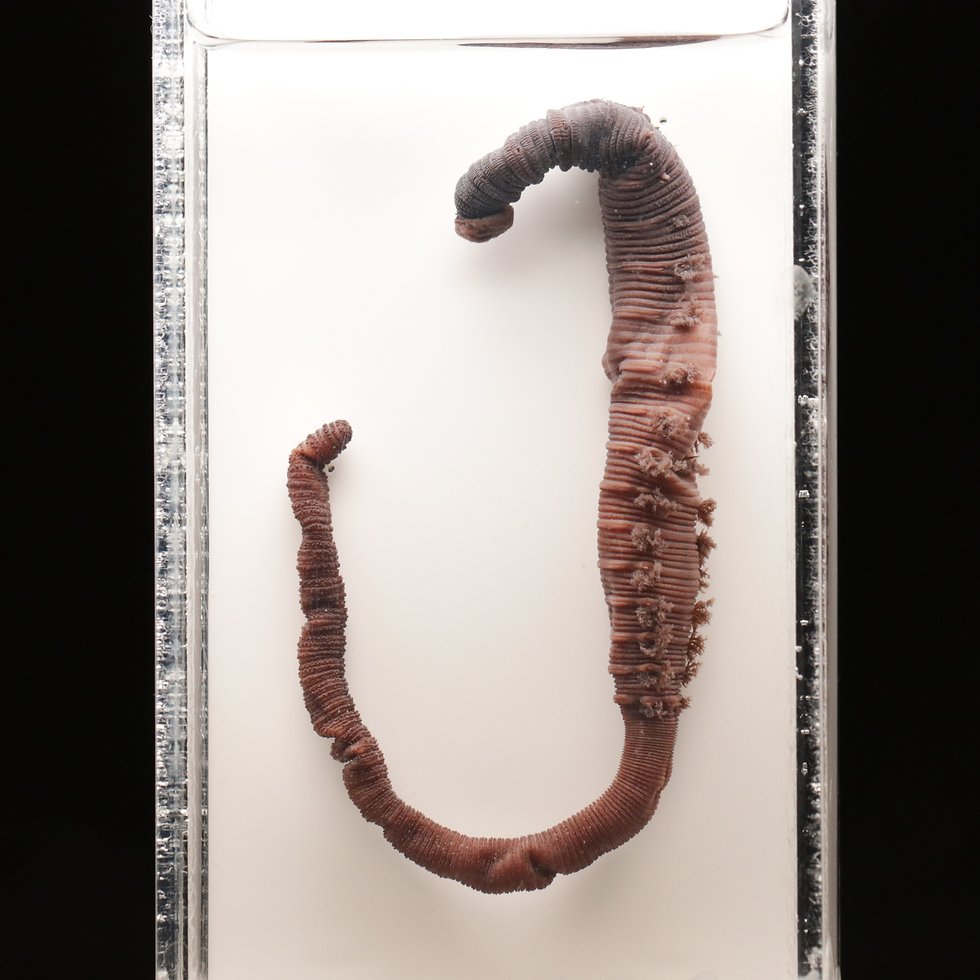Worms have a bit of a bad reputation: they’re slimy, live in dirt and we can all agree the word “worm” is generally used for its negative connotations. I’m sure you will like them a lot better after reading about the lugworm and start singing their praises with me.
𝘈𝘳𝘦𝘯𝘪𝘤𝘰𝘭𝘢 𝘮𝘢𝘳𝘪𝘯𝘢 (Linnaeus, 1758), the lugworm or sandworm, is a fascinating marine worm of the Annelid phylum, which also includes earthworms and leeches. It can be found in sandy shores and estuarine sediments in northwestern Europe. 🌍


👇 Lugworms live underground in the sand, where they dig U-shaped burrows, their heads at one end and their tails at the other. On the head end, they eat sand, feeding on the organic material in it. 💩 It is common to see little worm-looking coils of sand on lugworm-infested beaches - these are called worm casts and are essentially manure - digested sand that the worms have pushed out the tail end of their burrows onto the surface. Their cast-making reoxygenates the sand and also marks the lugworms for predation. 🐦 They are eaten by fishes and birds when their tail ends are exposed, but interestingly they can regrow this body part just like lizards (or Deadpool if you’re more into superheroes).

🏖️ The way lugworms spawn is quite bizarre, in that the males and females never actually meet, but both sexes know the exact time, which is one or two days a year when it’s time to breed. ⏱️ The males eject lots of sperm onto the sand surface at low tide, making puddles. Once the tide rises and these are diluted with seawater, the sperm are activated to start swimming - right into the females’ burrows, where the eggs await and are fertilised. 🥚 Larvae develop inside the female burrow, later being transported by the changing tides to other firm sandy areas where they create burrows of their own. 🌊
The lifespan of lugworms is around 5 years and they can reach up to 23 cm in length. Amazingly, they can make up around 30% of the biomass of a sandy beach! 🎣 The burrows are often destroyed as fishermen dig them up to use as bait, but if left untouched they can recolonise within a few months. You can also rear lugworms, and there are huge farms that produce and export tons of sandworms every year in China.

The coolest human use of lugworms is as blood donors. Yes, you read that right! 🩸 It turns out 𝘈𝘳𝘦𝘯𝘪𝘤𝘰𝘭𝘢 𝘮𝘢𝘳𝘪𝘯𝘢 is the best universal donor. Lugworm hemoglobin can carry 40 times the number of oxygen molecules that human hemoglobin can, AND it travels freely in the bloodstream, unbound by red blood cells and therefore unlimited by blood type. This means that they oxygenate way better and do not trigger the immune system. 👩⚕️ This is great news for emergency ischemia (restricted blood flow) treatment as well as for use before transplants, where organs often need extra oxygenation to stay healthy. 💉 The French company Hemarina has a marine farm that produces lugworm hemoglobin for several applications in the lab and in hospitals, some of which are still undergoing clinical trials. As you can see, even an insignificant creature like the lugworm can be useful to humankind, which is just one reason why protecting biodiversity is key.

✍️ In 1893, famous poet WB Yeats wrote a poem that features a lugworm singing on an Irish beach:
“But while he passed before a plashy place,
A lug-worm with its grey and muddy mouth
Sang that somewhere to north or west or south
There dwelt a gay, exulting, gentle race
Under the golden or the silver skies”.
When the restrictions end, how about you come visit the lugworm in our spirit collection? It doesn’t sing but it’s still pretty cool. 🤩
Text: Elvira Rey Redondo

Comments